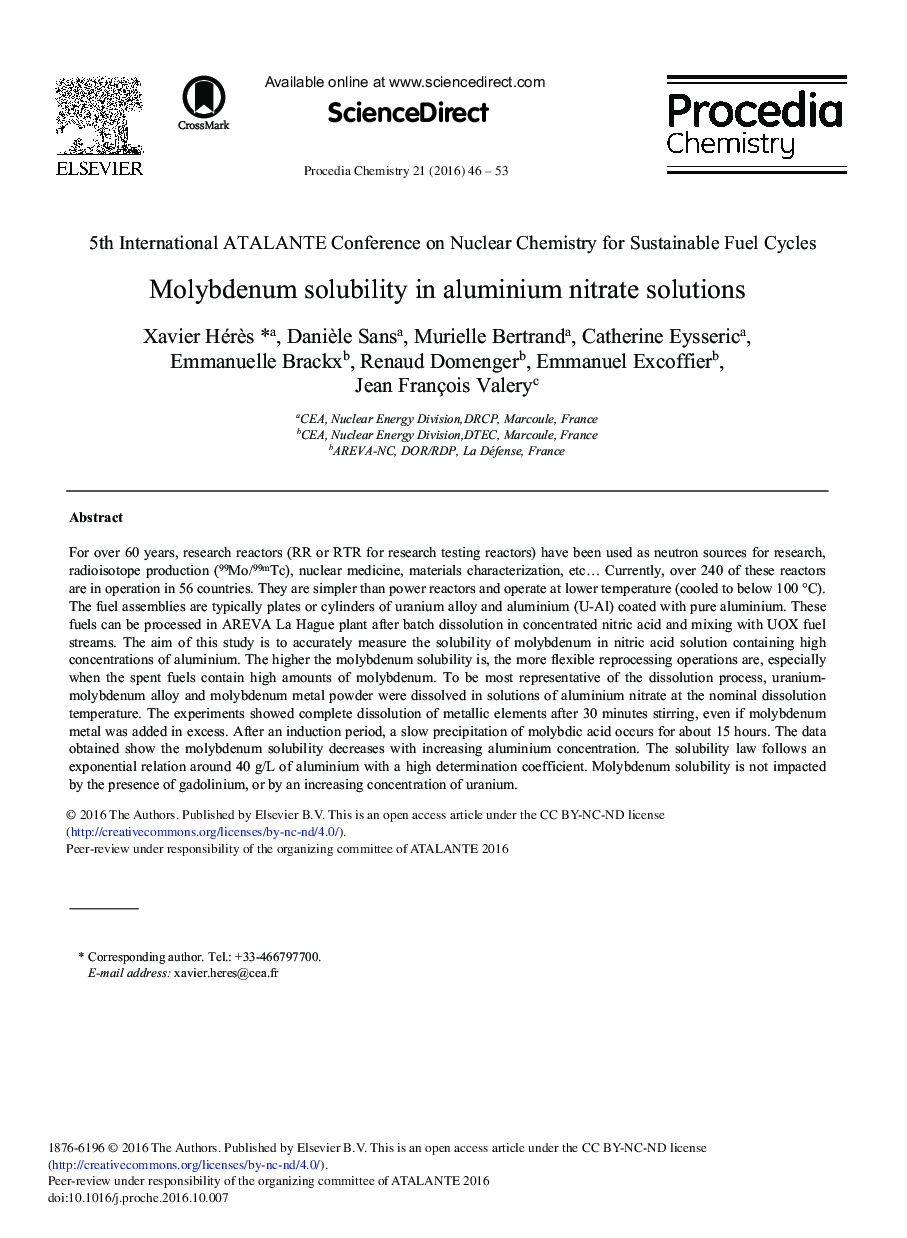| Article ID | Journal | Published Year | Pages | File Type |
|---|---|---|---|---|
| 4910908 | Procedia Chemistry | 2016 | 8 Pages |
For over 60 years, research reactors (RR or RTR for research testing reactors) have been used as neutron sources for research, radioisotope production (99Mo/99mTc), nuclear medicine, materials characterization, etc⦠Currently, over 240 of these reactors are in operation in 56 countries. They are simpler than power reactors and operate at lower temperature (cooled to below 100°C). The fuel assemblies are typically plates or cylinders of uranium alloy and aluminium (U-Al) coated with pure aluminium. These fuels can be processed in AREVA La Hague plant after batch dissolution in concentrated nitric acid and mixing with UOX fuel streams. The aim of this study is to accurately measure the solubility of molybdenum in nitric acid solution containing high concentrations of aluminium. The higher the molybdenum solubility is, the more flexible reprocessing operations are, especially when the spent fuels contain high amounts of molybdenum. To be most representative of the dissolution process, uranium-molybdenum alloy and molybdenum metal powder were dissolved in solutions of aluminium nitrate at the nominal dissolution temperature. The experiments showed complete dissolution of metallic elements after 30minutes stirring, even if molybdenum metal was added in excess. After an induction period, a slow precipitation of molybdic acid occurs for about 15hours. The data obtained show the molybdenum solubility decreases with increasing aluminium concentration. The solubility law follows an exponential relation around 40g/L of aluminium with a high determination coefficient. Molybdenum solubility is not impacted by the presence of gadolinium, or by an increasing concentration of uranium.
